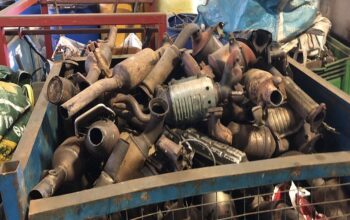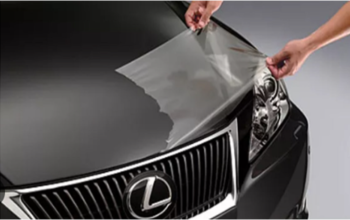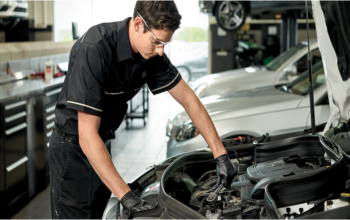You don’t have to be a mechanic or have a passion for cars to maintain your vehicle and keep it in good working order all year round, in order to save money and avoid problems. However, you must follow a few simple rules and apply certain easy-to-remember procedures so that you will no longer make urgent and desperate calls to your mechanic or to the roadside assistance service. Perform routine maintenance on your vehicle regularly to keep your car safe and ready for the road.
It’s a simple way to improve the life of your car without expensive repairs. One crucial aspect of this maintenance routine is conducting regular fluid checks to keep your bills down. You just need to check the oil level at regular intervals and add oil if the level is low. The gauge installed on the engine makes the task very simple even for a beginner..
Look for the engine oil cap and dipstick which is usually next to the engine block. Normally, the cap is marked “oil”. Before checking, let the engine cool down or operate in the morning before starting the car to get an exact reading.
Examine the rag. Is the oil particularly black? Do you notice the presence of sediment or aggregates? If so, you probably need to change the engine oil. Replace the dipstick, then remove it to check the oil level again. The mark left by the oil is usually between the two notches engraved on the dipstick [1] .
If the oil level is low, unscrew the cap and add a little high quality engine oil suitable for your engine type. If you have any doubts about the part numbers of the oil to be used, check with your automotive spare parts supplier. Use a funnel so you don’t accidentally spill oil, then check the level again.
Check the condition of the tires. There’s nothing worse than a puncture at the wrong time in the rain, when you’re late for work. Truly, this situation is appalling. However, regular inspection and tire rotation can save you from such an inconvenience. Check tire inflation pressure and check tread wear. Replace tires as needed [2] .
You can check your tire pressure at most gas stations or buy a gauge for a few dollars from an auto parts supplier and keep the gauge in your glove compartment for regular checks. Mark the correct inflation pressure on the sidewall of your tires and do not exceed it. Maintaining proper tire inflation pressure reduces fuel consumption and makes driving easier.
Check the level of other fluids. Locate the washer fluid reservoir, the transmission fluid reservoir, the brake system reservoir and the cooling system reservoir. Make sure all tanks are full and clean and top up as needed. You don’t have to perform these checks every week, but regular checks will keep your vehicle in good working order.
The transmission system. Aside from the oil dipstick, cars with an automatic transmission have another dipstick to read the transmission fluid level. Remove this dipstick, wipe it off and check the level. Generally, transmission fluid should be clean with a slight red coloration. You just need to change it about every 160,000 km.
The braking system. The fluid for this system is in a white reservoir under the hood. The reservoir is identified by the inscription “brake fluid”. The level should never drop unless there is a leak in the brake circuit. In this case, you should call a mechanic or check the circuit yourself.
Radiator fluid . You should only check the coolant level when the engine is completely cold. If you unscrew the radiator cap when the engine warms up even a little, very hot coolant literally shoots out of the radiator. So be extremely careful. If, while driving, you smell a sweet smell coming from the air conditioning system, think of a coolant leak which contains glycol, because this smell can be the result of the combustion of this product in contact with the hot engine. This leak may explain an insufficient level of radiator fluid.
The power steering fluid reservoir and the windshield washer fluid reservoir are plastic and are usually located in the engine compartment. The power steering fluid reservoir often has two marks, one for a cold engine and one for a warm engine, so when checking the level take into account the appropriate mark depending on the temperature of the engine and make back-up if needed. Windshield washer fluid isn’t important to the life of the car, but checking and maintaining the level of this fluid can help you use your windshield wipers longer.




